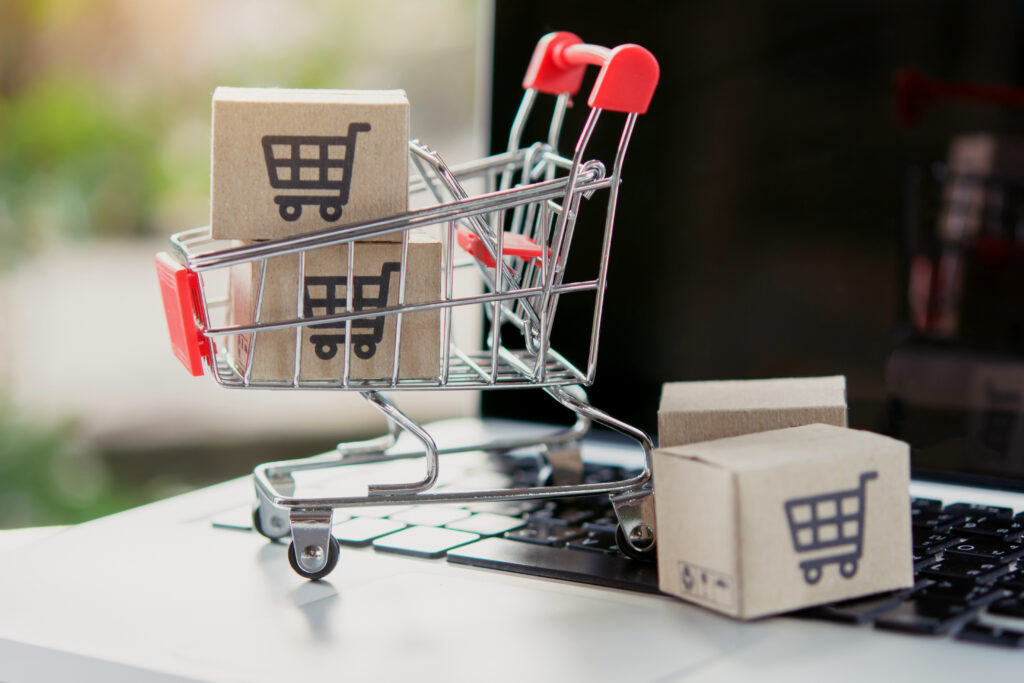Expertise
E-retail: innovation born of an unfavorable context?
7 minutes

In recent years, health risks, geopolitical tensions and unstable supply chains have shaken up standards and consumer habits in France and far beyond our borders.
Added to this, a context of continuing inflation, a possible recession and a general decline in household spending, this is not an easy one for retail players.
Let’s not forget what’s at stake for each player: maintaining the link between themselves and their consumers, strengthening customer relations, in the face of a shopper who is constantly evolving. Maintaining this link is essential to staying one step ahead of the competition.
Faced with this tough environment, we had to reinvent our way of communicating and addressing the digital shopper. Innovation, among other things, has been the key response to these major changes. This disruption has also brought creativity, mainly through digital transformation, omnichannel experiences, artificial intelligence… These changes have transformed our vision, our understanding and our approach to retail.
E-retail and digital marketing: winning strategies for business?
Before developing this question, let’s go back to basics: what is e-retail and how does it work?
E-retail offers many advantages for digital shoppers. It saves time, by reducing the need to travel. More often than not, sites offer attractive promotions and discounts. Last but not least, e-retail makes it easy to compare products and prices, facilitating purchasing decisions.
E-retail trends in France, according to FEVAD
According to the FEVAD (Fédération du e-commerce et de la vente à distance) key figures for e-commerce in France in 2022, e-commerce in France continues to grow. E-commerce sales are expected to reach €123 billion, an increase of 9%. This growth is due in particular to the increase in the number of consumers buying online, and to the wider range of products offered by e-commerce sites. Digital marketing is becoming a key element in the development of e-retail for every manufacturer, every retailer, every brand; this is to optimize the shopper experience.
And what about the e-retail media trend?
The explosion of digital advertising has had a significant impact on e-retail. Online advertising expenditure now accounts for 43% of the total advertising budget*, leading e-retailers to invest more in digital marketing to stay competitive. Digital activations have become a key element in their strategy to deliver a personalized and effective customer experience.
Let’s not forget that personalizing the customer experience has become a key element for every e-retailer, with a 20% increase in online sales thanks to personalization.
- 85% of consumers expect a personalized experience, whereas only 10% of companies think they offer this type of experience**.
- 40% of shoppers spend more than expected when the customer experience is personalized***.
- 80% of consumers are more likely to complete an online purchase with brands offering personalized experiences****.
Digital activations, thanks to artificial intelligence, are increasingly used to deliver an effective customer experience.
At Lucky cart, we work with first-party data to offer digital shoppers an individualized response tailored to their needs. We don’t work with an audience or improved targeting, but with each individual, each shopper arriving on his or her preferred drive-thru platform.
And what are the advantages of e-retail for each player?
E-retail offers brands and e-tailers the chance to reach a wider audience than ever before. Thanks to the Internet, products can be sold all over the world, with no geographical limits. This enables brands and retailers to reach potential customers in areas they would not otherwise be able to reach. What’s more, e-retail also makes it possible to reach a younger, more connected audience, who prefer to buy online rather than in-store.
E-retail also offers considerable economic benefits for brands and retailers:
- operating costs are lower than for physical stores, as there’s no need to pay rent or maintain large inventories.
- marketing costs are also reduced, as online advertising is generally cheaper than traditional advertising.
- e-retail also reduces transaction management costs, as online payments are faster and more efficient than cash payments.
And finally, after these economic advantages, e-retail enables us to get to know our customers better, thanks to the data collected during past and current transactions…
This data is analyzed by experts such as Lucky Cart, enabling us to better understand the purchasing behavior of each shopper, to learn more about their preferences and needs, and to better anticipate communication actions.
So what are the challenges facing e-retail in the short term?
- The challenges of data cybersecurity: online security is a major challenge for e-retailers and consumers alike. Complying with European regulations and taking all the necessary steps to ensure that data is completely secure is a daily challenge for every market player.
- The other challenge is competition. The multiplicity of players makes it difficult to synthesize the market and, as a result, the offer is undoubtedly a little too broad for the shopper. So we need to find ways of standing out from the crowd by offering a value proposition that is differentiating, enriching and modern.
- Another major challenge is the digitalization of stores, especially in the retail sector. We know that the two sales channels each bring a specific experience to customers. The aim of omnichannel strategy and retail digitalization is therefore to reenchant the customer journey, both in-store and online. Retailers will be able to offer a unique experience thanks to digital tools that promote communication and complementarity between the two channels. The best example of this is the digitization of leaflets: as the LSA/Bonial Barometer published at the start of 2023 shows, for 82%* of retailers this is a priority issue.
At Lucky cart, that’s exactly what we do, every day, on the sites of our retail partners. Our digital spaces enable us to offer simple, fun, non-intrusive digital activations throughout the digital shopper’s buying journey.
How about a little e-retail innovation?
Current trends to watch out for in e-retail include the use of artificial intelligence to personalize the shopping experience in real time based on their buying behavior, augmented reality to make the shopping experience even more immersive and help customers visualize products, and the use of chatbots to improve customer service. E-retailers need to be on top of these trends to stay competitive.
We’re not in a science-fiction movie, but in our world, in our everyday lives, and the innovations mentioned above are already just a click away.
So we can’t wait to see what e-retail has in store for us as DataTech and digital shoppers alike. To be continued!
Sources :
*FEVAD
**Salesforce
***Business Impact of Personalisation in Retail, Google et BCG
****Forbes
*****LSA/Bonial



